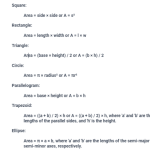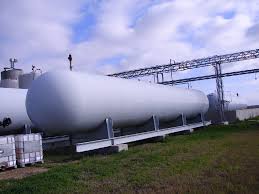As a certified API 510 inspector, I understand the importance of identifying and assessing pressure vessels for safety. Not only is it essential to ensure that these vessels are properly inspected in order to maintain safe operations, but it’s also important for those who have a desire for control over their own environment. In this article, I’ll discuss what inspectors should look out for when evaluating pressure vessels according to API 510 standards.
When inspecting pressure vessels, technology plays a crucial role in assessing the material condition of the vessel and its components. An inspector may use advanced technologies such as ultrasound, radiography, or thermography to perform non-destructive testing on the equipment where applicable. With the help of these technologies, an inspector can measure corrosion rates accurately and make an informed decision about the vessel’s overall condition. Additionally, the use of technology allows inspectors to collect and analyze data more efficiently, which can lead to faster and more accurate assessments. All of this information, combined with other data points such as operating temperatures and pressures, can help ensure that the pressure vessel is safe and reliable.
Finally, once all of the necessary inspections have been completed and relevant information has been gathered from various sources including manufacturers’ specs and regulations set forth by API 510 standards, api 510 certified inspectors can finally determine whether or not a particular pressure vessel meets all criteria for safety requirements. In my next article about identifying and assessing pressure vessels for API 510 inspections, I will go into more detail regarding each step involved in making sure everything is up to par!
Overview Of Api 510 Standards
API 510 certified pressure vessel inspectors are responsible for inspecting and assessing pressure vessels in a variety of industries. It’s estimated that over half of all process industry-related fatalities are attributed to pressure vessel related incidents, making API 510 standards an essential part of the industrial safety protocol. Understanding these standards is necessary to ensure safe operation while also adhering to applicable local codes and regulations.
The American Petroleum Institute (API) 510 standard provides guidelines on how to properly inspect, repair, alter, and rerate existing pressure vessels used in refineries, chemical plants, gas processing plants and other similar operations. This document outlines requirements for personnel qualifications, inspection intervals, examination methods, assessment criteria, and reporting procedures for pressure vessels operating under API certification. Furthermore it details the specific code requirements for repairs or replacements as well as documentation needed when conducting a thorough inspection.
A comprehensive understanding of API 510 standards can help operators safely use their equipment according to its original design intent without compromising safety or reliability through improper maintenance or negligence. With this knowledge they can confidently move forward with their inspections knowing that they have done so in accordance with accepted industry standards set forth by API. Armed with this information we’ll be better equipped to understand the types of pressure vessels we may encounter during our inspections moving forward.
Types Of Pressure Vessels
Now that we have an understanding of the API 510 standards, let’s discuss the different types of pressure vessels and their classifications. Pressure vessels can be classified by design, material, and application.
- Design: There are two main designs for pressure vessels – cylindrical or spherical shapes. Cylindrical pressure vessels typically contain walls which are either straight or tapered in shape while spherical pressure vessels are shaped like a sphere with uniform wall thickness throughout.
- Materials: Different materials may be used to construct a pressure vessel depending on its purpose and intended use. Commonly used materials include stainless steel, carbon steel, aluminum alloys and titanium alloys. Each one has unique properties such as corrosion resistance or temperature tolerance that make them more suitable for certain applications than others.
- Applications: Pressure vessels can be found in many industries including chemical processing plants, oil refineries, power generation facilities, food production facilities and more. They are used to store liquids or gases at high pressures safely without risk of rupture or explosion due to over-pressurization.
These three factors help determine what type of pressure vessel is best suited for each particular application and must be taken into consideration when selecting one for inspection purposes under API 510 regulations. Knowing the type of pressure vessel being inspected helps ensure that it meets all safety requirements prior to starting any inspections procedures outlined in the standard guidelines.
Pre-Inspection Considerations
When it comes to API 510 inspections for pressure vessels, preparation is key. As a certified inspector, I understand the importance of pre-inspection preparation which includes safety protocols and specification review as well as inspection planning and retrieval of equipment records.
First, it’s important to ensure that all safety protocols are in place prior to beginning an inspection. This can help prevent any potential hazardous situations from arising during the process. Additionally, performing a thorough review of specifications will help me identify what items need special attention during my evaluation.
Inspection planning is also critical when conducting an API 510 inspection on a pressure vessel. Having a plan helps me stay organized while ensuring that no stone has been left unturned. Lastly, obtaining historical records of the equipment being inspected can provide valuable insight into its condition before starting the visual inspection process.
Visual Inspection Process
As an API 510 certified pressure vessel inspector, visual inspections are a key part of assessing the overall condition and safety of any pressure vessel. This involves looking for signs of corrosion, cracking or damage to determine if it meets API standards and is safe for operation. During the inspection process, I will use non-destructive testing methods to identify potential issues before they become serious problems.
The first step in this process is to examine the entire surface area of the pressure vessel with my eyes, then look at all weld seams carefully. I’ll check for any cracks or flaws that might indicate further structural instability or degradation. In addition, I’m checking every connection point such as flanges and bolts, making sure they’re free from rust and other signs of wear.
After performing a thorough visual inspection on the pressure vessel, I can make a more accurate assessment regarding its overall condition and whether or not it complies with API standards. If anything looks suspicious during this stage, additional tests may be necessary to ensure proper safety protocols have been followed.
At this point, I am ready to move onto another type of test – non-destructive testing methods – which can help me get even more detailed information about the integrity of the pressure vessel’s components and structure.
Non-Destructive Testing Methods
Ah, the joys of being an API 510 certified pressure vessel inspector. Sure, it’s a lot of work – but that doesn’t mean I can’t have some fun with it! In order to properly identify and assess pressure vessels for API 510 inspections, non-destructive testing methods must be used. These include ultrasonic testing, radiographic testing, hydrostatic testing, and magnetic particle testing.
First off is ultrasonic testing (UT). This technique uses high frequency sound waves to detect any cracks or corrosion within the material being inspected. It also helps determine the thickness of the walls and other components inside the pressure vessel. Radiographic tests use X-rays or gamma radiation to create images of internal structures in order to detect any flaws in them. Hydrostatic tests are conducted by filling up a pressurized vessel with water or another liquid and then checking for signs of leakage on its surface. Finally, there’s Magnetic Particle Testing which looks for indications of cracking using magnetism as well as visible particles such as iron filings.
All these NDT techniques play an important role when it comes to identifying and assessing pressure vessels for API 510 inspections. They help ensure that all safety regulations are met and allow us to make sure that everything is working correctly before putting them into operation. With this knowledge we’re now ready to move onto overall assessment and recommendations.
Overall Assessment And Recommendations
As an API 510 certified pressure vessel inspector, I have completed a thorough evaluation of the pressure vessels. After careful consideration and review of all evidence gathered during the assessment, I am confident in making several recommendations for further inspection as well as for overall compliance with API 510 standards.
The first recommendation is to identify any potential issues related to the pressure vessel rating based on material compatibility or corrosion risks. This should be done prior to recommending any additional inspections that may need to take place. Additionally, it is important to note that regular maintenance checks should be conducted going forward from this point, in order to ensure continued safety and proper operation of the pressure vessels.
Finally, after considering all factors relating to my overall assessment, I recommend conducting a detailed inspection of each individual pressure vessel unit according to API 510 guidelines. Doing so will help ensure that they are operating safely and compliantly within their intended design parameters. In addition, if any indications of potential damage or wear are identified during these inspections then repairs or replacements may be necessary in order for them meet API 510 requirements.
Conclusion
My conclusion after reviewing the pressure vessel for API 510 inspection is that it meets the standards and requirements prescribed by the American Petroleum Institute. The overall condition of the vessel was inspected, tested, and assessed to ensure safe operation. Throughout this process, I made sure to take into account all pre-inspection considerations as well as visual cues that indicated any potential risks or issues with the vessel.
I also utilized non-destructive testing methods such as radiography and ultrasonic thickness measurements in order to gain an accurate understanding of how much wear and tear had occurred over time. By utilizing these techniques and cross referencing them against API standards, I was able to make a comprehensive assessment regarding the integrity of the structure itself.
Finally, I am confident in my recommendation that this particular pressure vessel is fit for continued use once necessary repairs have been completed. With proper maintenance procedures in place going forward, there should be no reason why further inspections will not yield similar results.





